In cats, melanism results in the fur of the animal being very dark or black in color.In many cases the usual markings of the animal can be faintly seen through the dark fur, especially at certain angles in bright sunlight.
{Melanistic - derived from melanin, a dark colored skin and hair pigment}

copyright Nancy Vandermey
Melanistic cats are commonly born into mixed litters along with normally colored siblings.
They are mainly found in the dense, wet forested areas of India and south east Asia, where the coloration is an advantage for them to hunt.
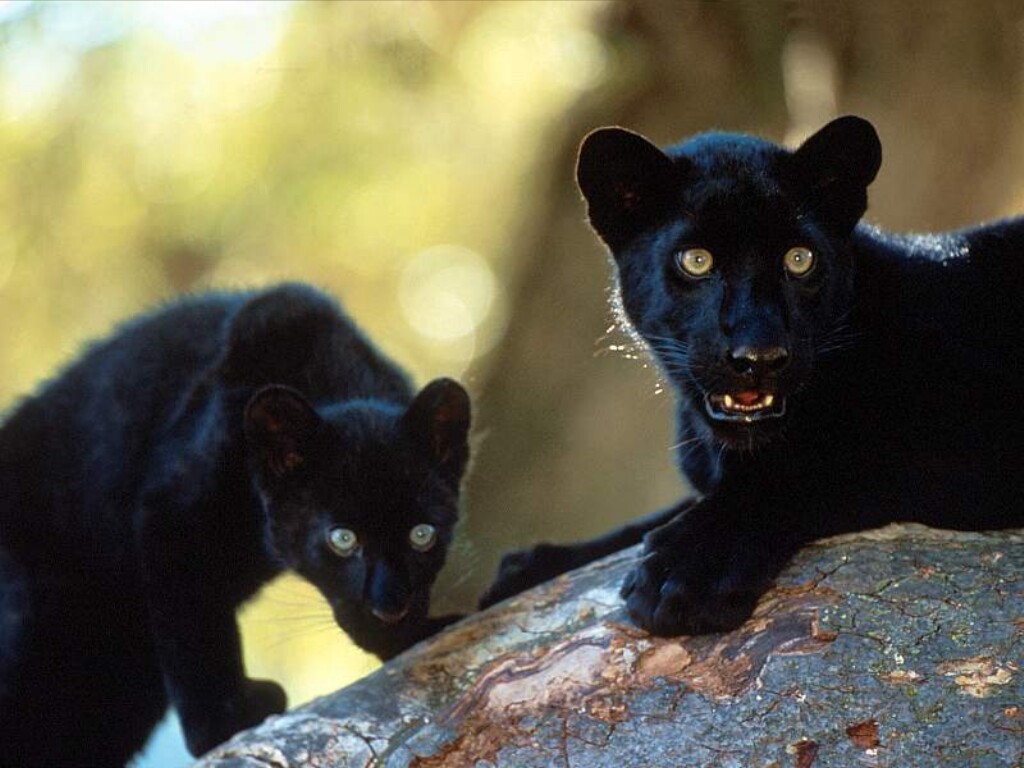
"Panther" is a word used to describe a variety of large cats, but the correct name for this cat is Leopard.
Leopards are famous for their ability to go undetected.
They may live practically among humans and still be tough to spot.
They are graceful and stealthy. Of all the big cats, they are probably the most accomplished stalkers.
They are agile climbers and can descend from a tree headfirst!
They are strong swimmers but not as fond of water as tigers.
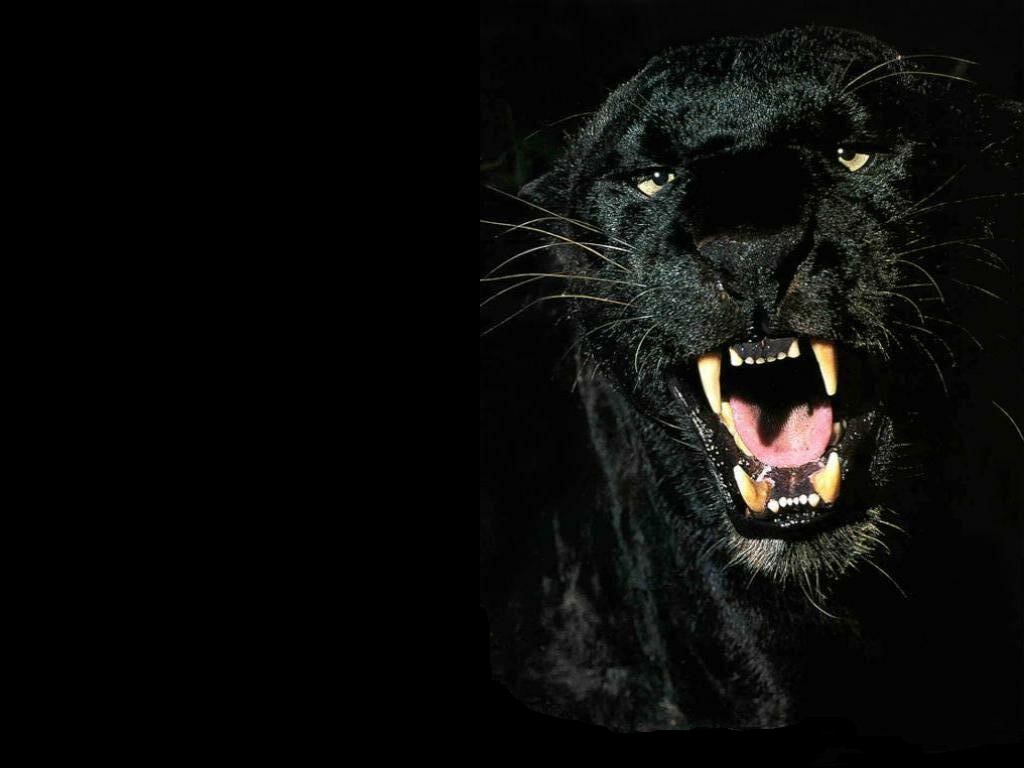
They are mainly nocturnal but can be seen at any time of day and will even hunt during daytime on overcast days.
Leopards are solitary, avoiding one another,
although at times they have been spotted in groups of 3-4.
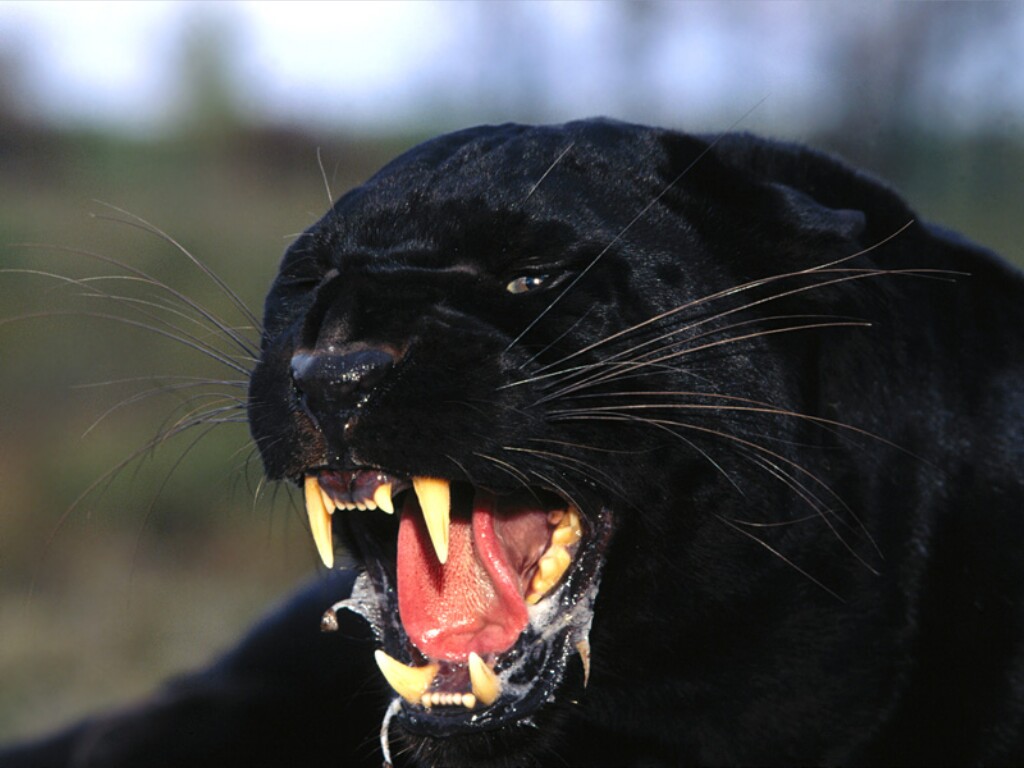
Hearing and eyesight are the strongest of these cats' senses and are extremely acute.
When making a threat, leopards stretch their backs,
depress their ribcages between their shoulder blades so they stick out, and lower their heads (much like our domestic cats).

Considered the most adaptable of the big cats, it eats just about anything.
During the day they may lie in bush, on rocks, or in a tree with their tails hanging below the treetops so they can be seen.
Black leopards are actually born to spotted parents,
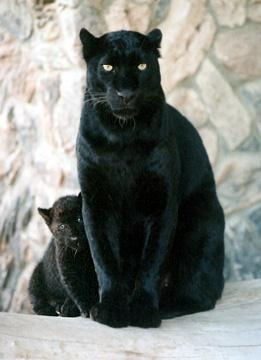
copyright Nancy Vandermey
the cubs are dark brown with the same pattern of black spots as other leopards have.
Cubs are usually born in a litter of 2-3, but infant mortality is high and mothers are not commonly seen with more than 1-2 cubs.
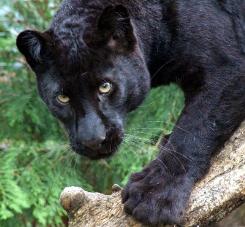
The pregnant females find a cave, crevice among boulders, hollow tree, or thicket to give birth and make a den.
Cubs open their eyes after a period of 10 days.
The fur of the young tends to be longer and thicker than that of adults.
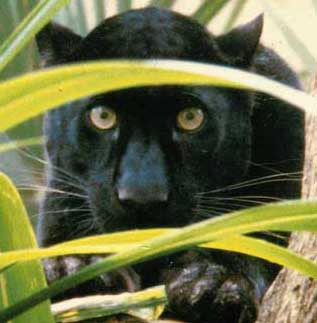
Around 3 months the infants begin to follow the mother out on hunts.
At one year of age leopard young can probably fend for themselves but they remain with the mother for 18-24 months.
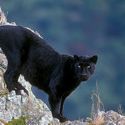
Male leopards weigh between 80-198 pounds, females weigh between 60-130 pounds.
They are 18-30 inches high at the shoulder.
There are over 20 subspecies of leopards. They can adapt and live in a variety of habitats, they are living in jungles, deserts and even near human populations.
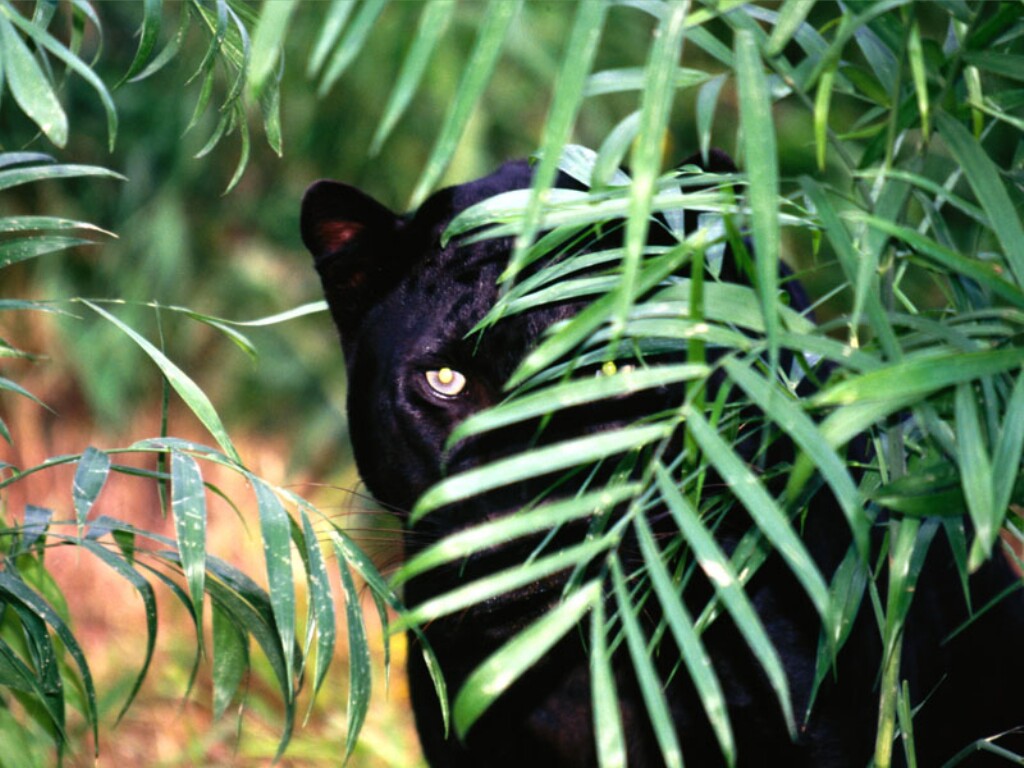
The Leopard is found throughout Africa, Israel, Sri Lanka, Pakistan, India, parts of Indonesia, Southeast Asia and the Middle East.
It's territory can extend up to 25 square miles.
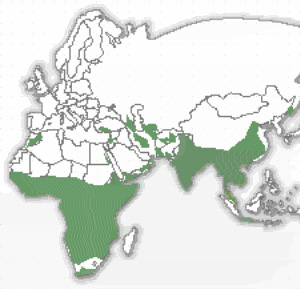
In Africa, leopards living in hilly areas tend to be larger than those living in lowlands.
The black Leopards is found more frequently in densely forested areas where being darker is beneficial in remaining unseen as compared to open areas.
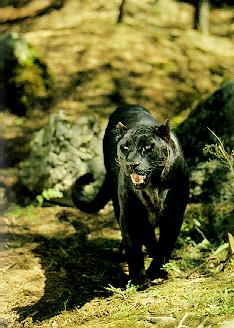
Leopards' coloration is extrememly effective. Scientists have been unable to spot these cats just a few yards away even knowing that they were present.
Although a strong and competent hunter the leopard is not without threat from other carnivores
- because of this the leopard commonly catches its prey high in the boughs of trees away from packs of scavenging hyenas and opportunistic lions.
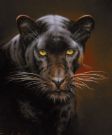
It is here that the leopard demonstrates its huge strength - its powerful limb and neck muscles enabling it to carry a fully grown male antelope or even young giraffe,
often weighing up to three times its own body weight, high into the tree tops.
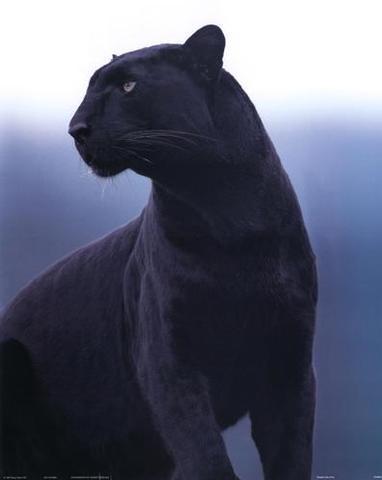
They may also store kills in trees for later use. The diet of these big cats is surprisingly varied. Prey for this species includes: wildebeest, impalas, reed-bucks, Thomson's gazelles, jackals, baboons, and storks.
However, other prey are included in leopards' diet. At times they seem to show a preference for canines, even attempting in the past to snatch dogs right from the feet of their masters.
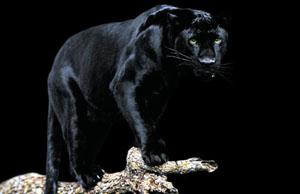
They will eat fish and domestic stock such as goats.
They capable of killing apes. They will even eat carrion, scavenging tiger kills.
These cats are capable of sneaking right up next to the prey before being spotted, almost appearing from nowhere.
Expected lifespan in the wild is 7 to 9 years, and in captivity 21-23 years.

copyright Mark Kostich
"OK, someone better find out who stole his chew toy...... quick!"
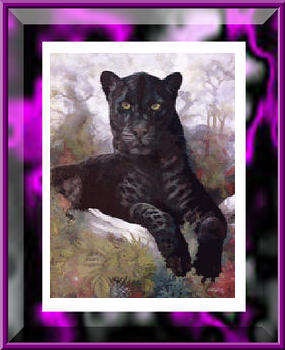
"Thanks Sleeper for the purdy picture"

There are three subspecies virtually extinct -- Amur, Anatolian, and Barbary.
The Amur leopard comes from the Chinese-Russian border and North Korea. This is a very beautiful cat and is often compared to the snow leopard.
It is estimated that there are only about 20 Amur leopards left in the wild. There are about 114 living in captivity where they are involved in breeding programs.
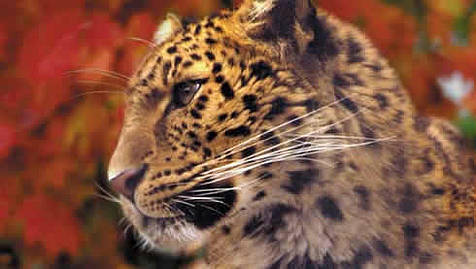
copyright WWF
The Barbary Leopard resembles the familiar leopard of East Africa, but in keeping with its home in the snowy Atlas Mountains, it is stockier, with a thicker coat.
A bold and versatile cat, it may go for a month without drinking.
It consumes nearly any form of protein, from beetles to antelope nearly twice its weight.
The Barbary Leopard is also a predator of the Barbary Macaque.
The Barbary Leopard is an endangered species. Only 12 may remain in the Atlas Mountains.
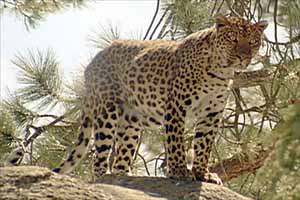
copyright PBS
The Anatolian leopard is classified as a member of the order Carnivora (Carnivores) and is a member of the family Felidae.
It is classified as a critically endangered species due to an estimated population of less than 250 mature individuals, a continuing decline in numbers of mature individuals, and a severely fragmented population.
Anatolian leopards can be found in Turkey.
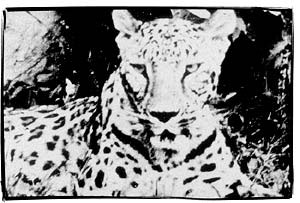
copyright Wildlife On Easy Street-A Big Cat Sanctuary
Please help these near extinct Leopards!

 "Needing You"
"Needing You"Midi "Needing You" is
used with artists permission
and is copyright © 2000 Bruce DeBoer


Home Table of Contents Carousels Carousels II
Tigers Are Beautiful! Colors of the Tiger Tiger Talk POLICE Backgrounds,Gifs,Bars,Logos and Plaques Grizzlies
There Is A Story Behind That Hymn
Wolves In The Wild Wolf Whispers Nursing & Medical Graphics My Favorite Medical Links Library of Favorite Poems
Sweet,Gentle Giraffes Giraffic Park Lighthouses Barns Kiss Me! I'm Irish In Memory Of A Special Friend Gifs,Backgrounds,Bars,Midis & Tools Cards and Fun Stuff The Blue and the Gray What's Cookin'? PATRIOTIC Backgrounds,Gifs,Bars,Logos and Plaques Friends Links Banner Exchange My Page Banners My Awards
Sign and Read My Guestbook Email me!



Look! Another purdy picture from Sleeper.
Who knew pretty black leopards were artistic too!

Reference- (Nowak, 1997, Guggisberg, 1975)
